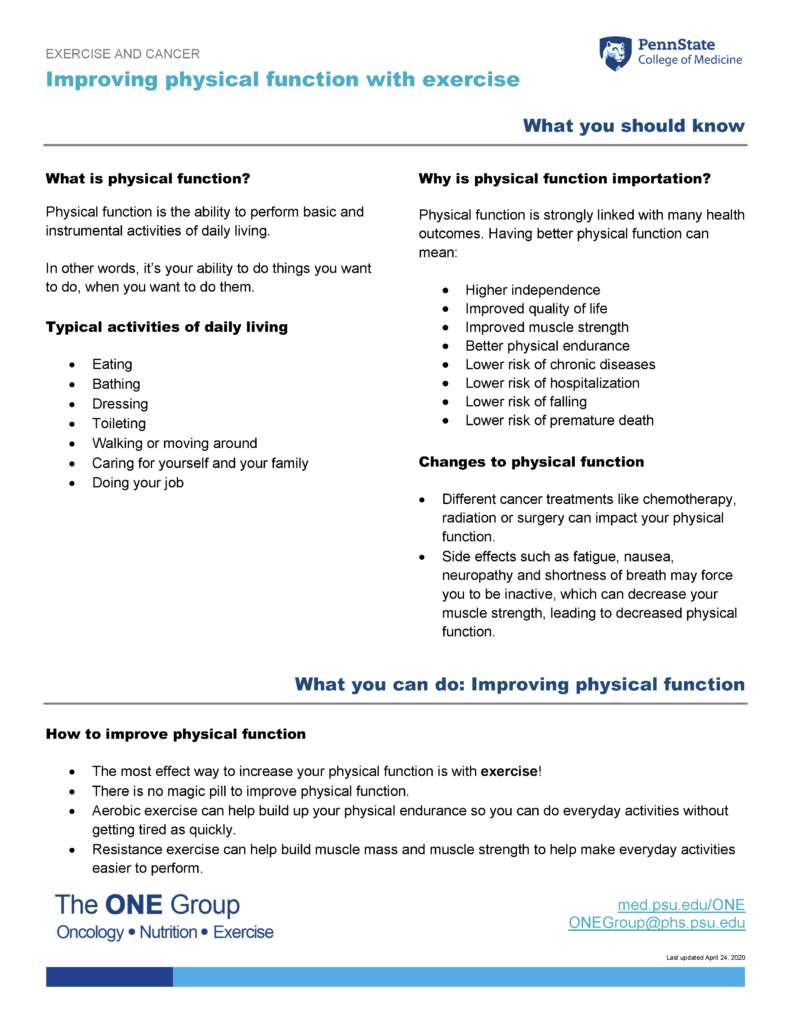Learn about improving physical function with exercise in people with cancer in this guide from The ONE Group (Oncology – Nutrition – Exercise) at Penn State College of Medicine.
Jump to topic
Search
What you should know
What is physical function?
Physical function is the ability to perform basic and instrumental activities of daily living.
In other words, it’s your ability to do things you want to do, when you want to do them.
Typical activities of daily living
- Eating
- Bathing
- Dressing
- Toileting
- Walking or moving around
- Caring for yourself and your family
- Doing your job
Why is physical function importation?
Physical function is strongly linked with many health outcomes. Having better physical function can mean:
- Higher independence
- Improved quality of life
- Improved muscle strength
- Better physical endurance
- Lower risk of chronic diseases
- Lower risk of hospitalization
- Lower risk of falling
- Lower risk of premature death
Changes to physical function
- Different cancer treatments like chemotherapy, radiation or surgery can impact your physical function.
- Side effects such as fatigue, nausea, neuropathy and shortness of breath may force you to be inactive, which can decrease your muscle strength, leading to decreased physical function.
What you can do: Improving physical function
How to improve physical function
- The most effect way to increase your physical function is with exercise!
- There is no magic pill to improve physical function.
- Aerobic exercise can help build up your physical endurance so you can do everyday activities without getting tired as quickly.
- Resistance exercise can help build muscle mass and muscle strength to help make everyday activities easier to perform.
Strength training with functional limitations
Strength training still is possible if you have functional limitations like pain, limited range of motion, numbness (neuropathy) or muscle weakness.
- Always consult your doctor before starting an exercise training program.
- Never push yourself to the point of pain.
- Always start exercising slowly and cautiously to gauge how much your body can handle.
- Pick exercises that align with your goals.
- Modify exercises to match your physical capability; many lower- and upper-body exercises can be done from a seated position instead of standing.
Where can I find more information about aerobic and strength-training exercises?
If you are interested in starting aerobic and/or strength-training exercises, The ONE Group (Oncology – Nutrition – Exercise) provides videos demonstrating proper form for more than 50 exercises.
Notes
References
- American College of Sports Medicine Moving Through Cancer initiative
- National Institutes of Health

